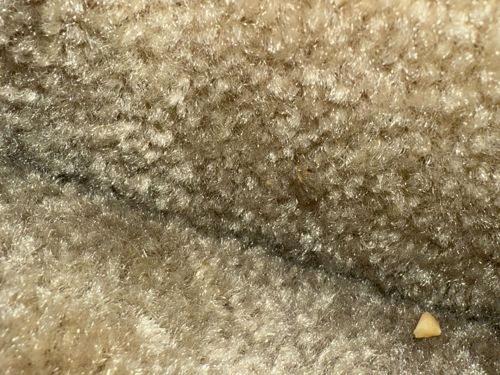Carpet Beetle (larva)
Scientific Name: Trogoderma, Anthrenus or other genera (Dermestidae)
Order & Family: Coleoptera, Dermestidae
Size: 2-5 mm (larvae)

Natural Habitat
Indoors, especially in areas with natural fibers like carpets, woolens, furs, upholstered furniture, and stored food products. Outdoors, they can be found in nests of birds and rodents or feeding on dried plant and animal matter.
Diet & Feeding
Larvae feed on a wide variety of animal and plant products, including wool, silk, fur, feathers, leather, dried meat, dead insects, pet food, and cereals.
Behavior Patterns
The larvae are slow-moving and often hide in dark, undisturbed areas. They are known for shedding their skin multiple times as they grow, leaving behind characteristic hairy casings. Adults are typically attracted to light and often found near windows.
Risks & Benefits
Risks include significant damage to natural fiber textiles, carpets, clothing, museum specimens, and stored pantry items, leading to economic losses. They can also cause skin irritation or allergic reactions in some sensitive individuals due to their hairs. There are no significant benefits associated with carpet beetles in human environments, other than their role as decomposers in natural ecosystems.
Identified on: 11/15/2025